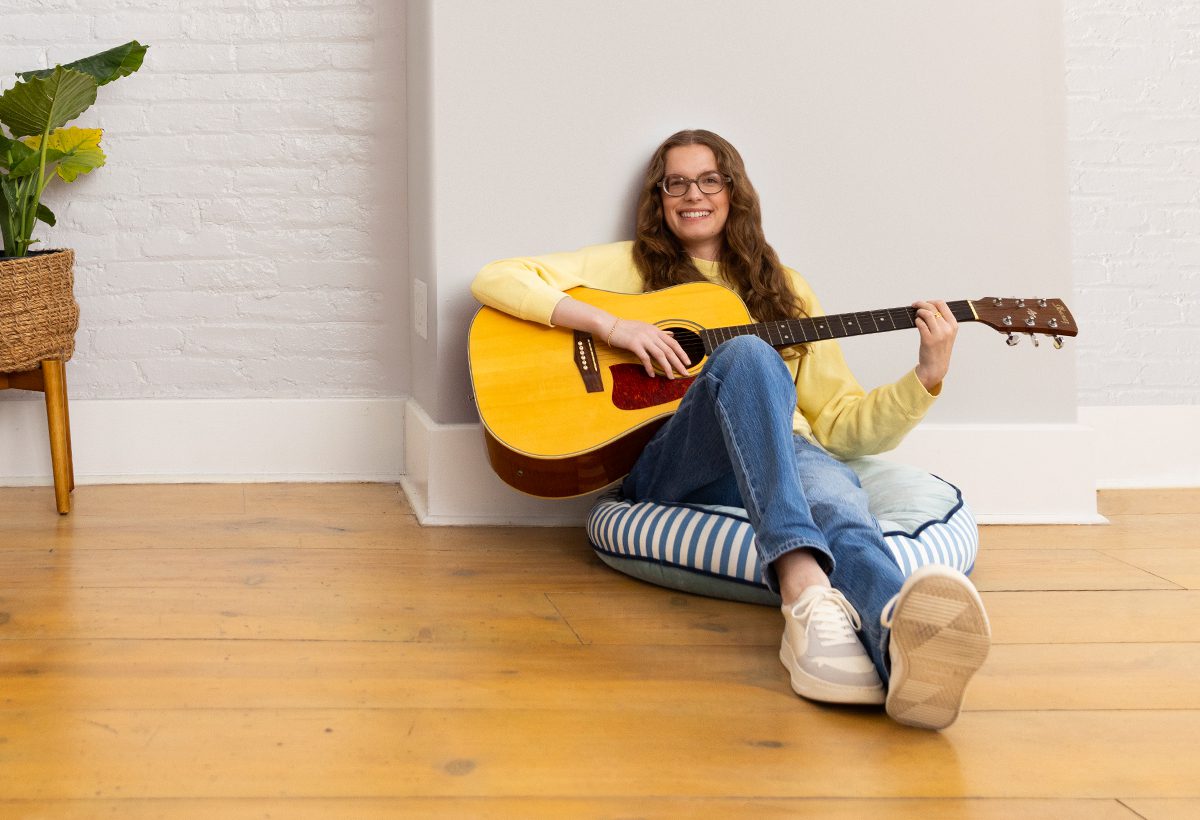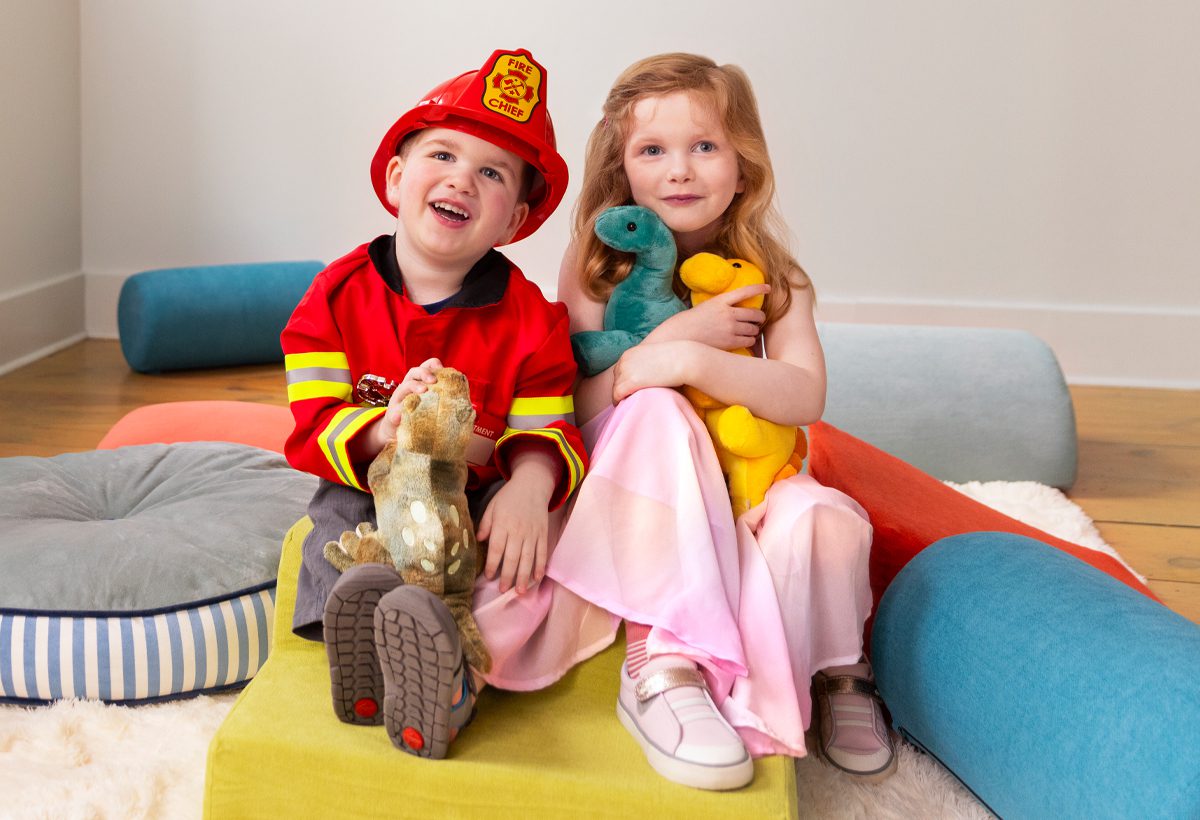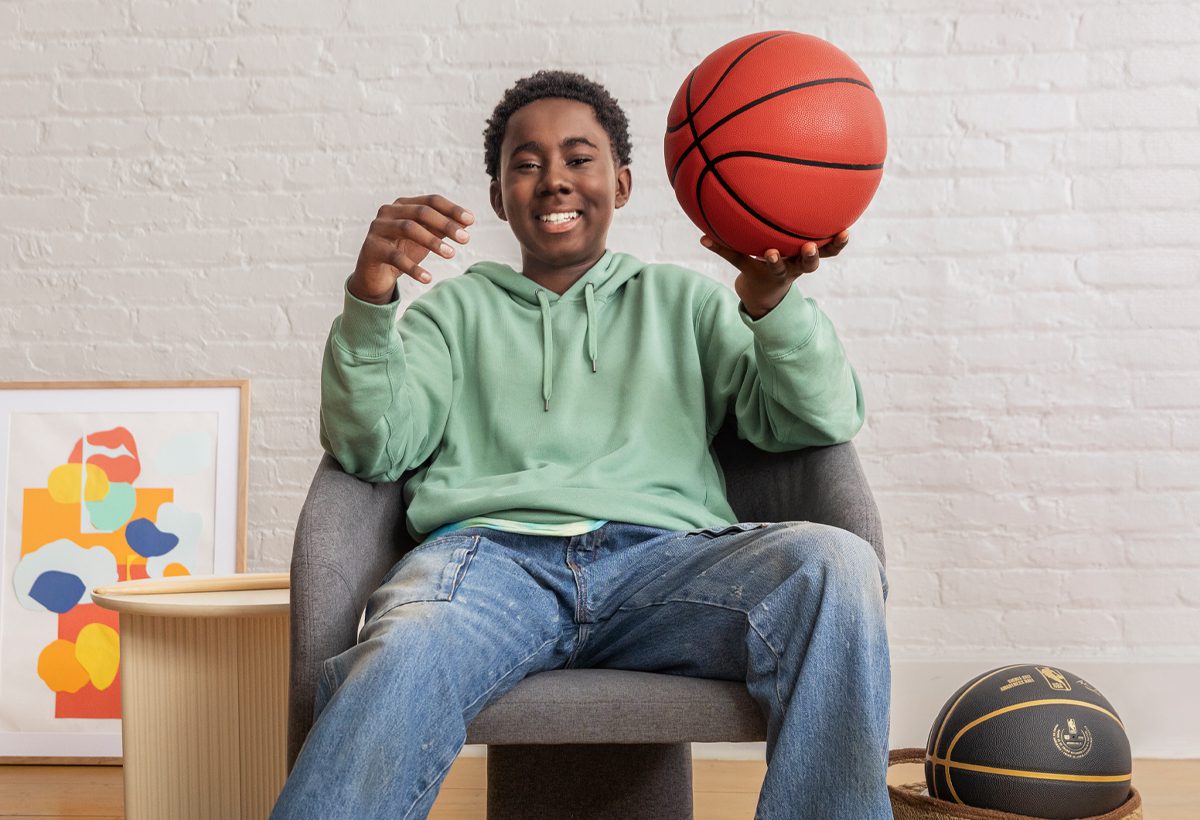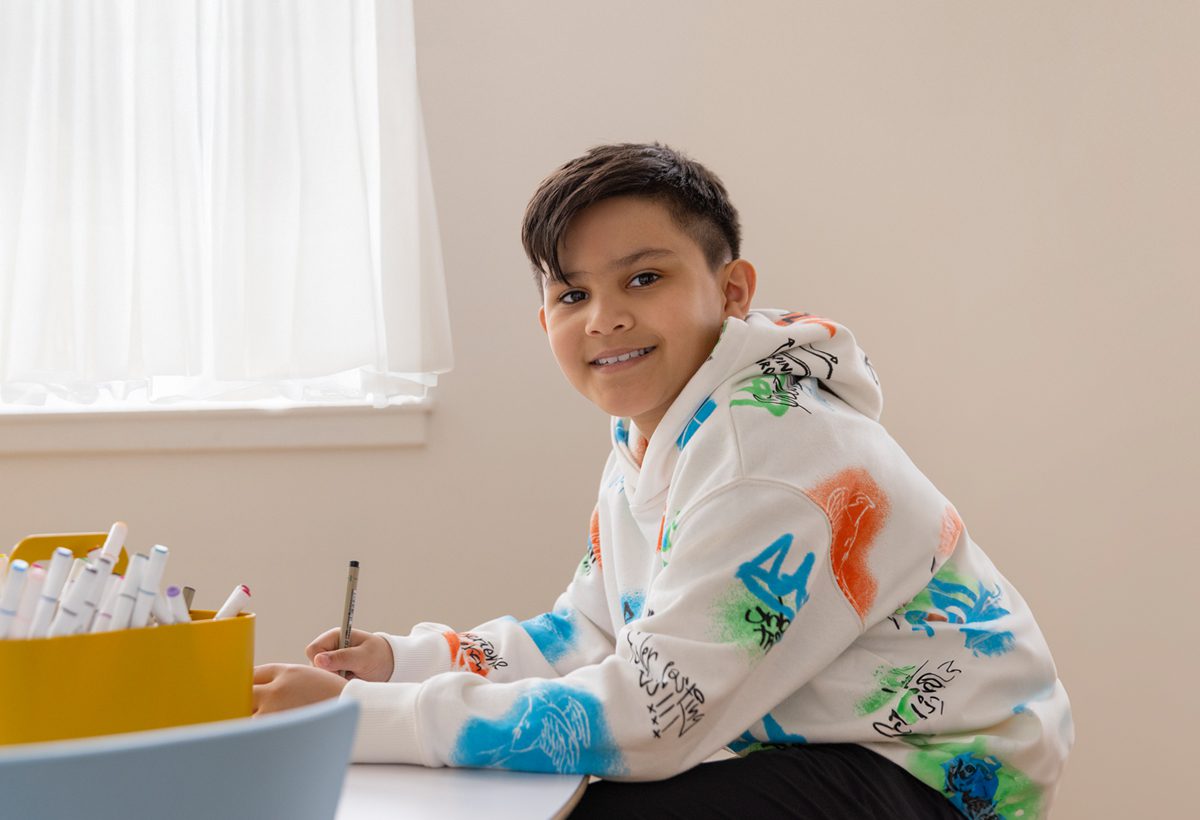Giving Children a Healthier Future
After being treated at NewYork-Presbyterian, these six pediatric patients are thriving and ready to keep pursuing their dreams.
When 8-year-old Aramara Romero came home after spending months in the hospital, she told her mother, Mariana, that she wanted to be a doctor when she grows up. Mariana was once again awed by her daughter’s resilience. “I thought, ‘Didn’t you spend enough time at the hospital?” she says. “But Aramara is so strong. She said, ‘I’ve been through so many things, Mommy, and it’s not easy. I can tell people I had cancer and really make them feel better.”
It was July 2021, and the Romeros were camping by a lake when Mariana noticed Aramara, who loves swimming, had no energy. “She’s usually a very active girl and loves to play, so it was not normal,” says Mariana. “Her skin was also pale, and she had pain in her legs. We went home that day and scheduled an appointment with the doctor.”

The pediatrician initially tested Aramara for anemia, but her condition worsened to the point where she could barely walk. Mariana went back to the doctor and was told to take her immediately to the emergency department at NewYork-Presbyterian Komansky Children’s Hospital. Three hours later, blood tests showed Aramara had cancer. “I thought no, this cannot be true, cancer is only for grownups,” says Mariana. “I wanted to run out of the hospital with her and leave. It was a nightmare. There was pain in her body, and pain in my and my husband’s soul, but I needed to trust that my daughter was going to be fine.”
Finding Hope
Dr. Alexander Chou, a pediatric oncologist with NewYork-Presbyterian and Weill Cornell Medicine, met with the family the next morning to confirm the results. Aramara’s bone marrow — the tissue inside the bone which produces white blood cells, red blood cells and platelets — was not functioning properly. Her blood cells had mutated into leukemia cells and were proliferating. The leukemia cells were blocking the production of normal cells, putting her at high risk for infection, anemia, and bleeding.
Aramara was diagnosed with acute lymphoblastic leukemia (ALL), a rare cancer that accounts for less than half of 1% of all cancers in the United States, according to the American Cancer Society. However, leukemia is the most common type of childhood cancer, and about three out of four childhood leukemias are ALL. ALL starts in early forms of white blood cells called lymphocytes and typically occurs in children ages 3 to 10 years. Scientists are still researching the cause and understanding risk factors. “When I talk to patients and parents, I tell them it’s nothing you did or didn’t do,” says Dr. Chou. “The flip side is that, unlike some of the adult cancers, children with ALL can be cured more than 90% of the time. There is a lot of hope.”
Back in the Water
Within two days of arriving at the hospital, Aramara started treatment for ALL under the careful watch of Dr. Chou and a team of nurses, physician assistants, social workers and child life specialists. “When they first told us about her cancer, it was all so new to me,” says Mariana. “It was hard, but I remember Dr. Chou telling me not to worry. Any question we had, they had an answer, so I felt comfortable with them and didn’t doubt for a minute that she would be okay.”
Treatment for ALL usually takes several years altogether, and it is done in phases. The initial intensive chemotherapy is hardest to tolerate, and it lasts about two months. Aramara also needed a spinal tap to make sure the leukemia cells did not travel to her brain. “The goal with chemotherapy is to suppress enough of the bad cells to allow the good cells to grow back in place, but there are side effects and patients are prone to infections,” says Dr. Chou. “We monitor the kids very closely, and then we tailor the dose of chemotherapy depending on how their bodies respond to it.”
During the intensive chemotherapy, Aramara experienced painful side effects like hair loss, weight gain and fatigue. To help her cope, the nurses and child life specialists would bring her arts and crafts and puzzles to work on. She also developed chemotherapy-induced diabetes, a common side effect that prolonged her hospital stay for another week. “I felt like it was something new all the time,” says Mariana. “It was like a rollercoaster, lots of ups and downs, especially for Aramara.”
After a month at the hospital, Aramara was able to go home and begin the next phase of her treatment. For two years she continued chemotherapy infusions at the hospital and in liquid form at home to reduce the risk of the cancer coming back. Her cancer is now in remission. “When I was in the hospital, I felt low and kind of dizzy,” she says. “Now I feel free, and I have more energy.”
Aramara is back in school (her favorite subject is math), making new friends, playing with her cat — and this summer, whenever possible, she plans to go swimming. “She faced a lot, and I never saw her complain,” says Dr. Chou. “I’m excited to see what she does in the future. She’s just a fantastic girl. She is resilient, compassionate, and very inquisitive. I think all of those qualities will make her a great physician someday.”
Chasing Dreams
Get to know six resilient patients who have overcome health setbacks and now have big plans for the future.

Isabella Ciriello
Age: 18
Loves to: Play piano and guitar, dance and read
Her Story: Born 16 weeks early, Isabella spent the first three months of her life in the NICU at NewYork-Presbyterian Komansky Children’s Hospital. While in the NICU, Dr. Jeffrey Perlman, the former director of newborn medicine at the hospital, encouraged Isabella’s mother, Marcia Ciriello, to play classical music for her, and Isabella is convinced it led to her passion for music from a young age. As a teenager, Isabella returned to the NICU to play guitar and sing to babies. Listen to Isabella tell her story and watch a special performance.
Plan for the Future: Starting college at the University of Chicago, major in political science and studying law.
In Her Words: “Being a preemie, I think I have a lot of resilience, and I don’t get shaken up about things like other people do.”

Everett and Ruby Cotter
Ages: 3 and 4 years old
Love to: Draw and go to the playground.
His Story: As a 6-month-old baby, Ruby underwent a heart transplant at NewYork-Presbyterian Morgan Stanley Children’s Hospital after suffering from dilated cardiomyopathy, a rare condition where the heart is enlarged and unable to pump blood efficiently through the body. A year later, the Cotters’ second child, Everett (also known as Buddy) was diagnosed with the same condition. The same pediatric heart team that cared for Ruby also cared for Buddy, keeping him alive with a mechanical heart as he waited for a donor heart. When one became available, Dr. David Kalfa, Ruby’s surgeon, also performed Buddy’s heart transplant. Read more about the Cotter family and their journey through two heart transplants.
Dreams for the Future: To become a princess and a firefighter.
In Mom’s Words: “This is just the beginning of their story. They have full lives ahead of them.”
In Dad’s Words: “They don’t realize how strong they are. They don’t realize why they have scars. It’s part of their nature to overcome fears.”

Francisca Kwakye
Age: 21
Loves to: Go to the gym, dance, hang out with her friends.
Her Story: As a young girl in Ghana, Francisca spent much of her childhood in chronic and crippling pain from sickle cell disease. Eventually she came to the U.S. to seek treatment and ultimately received a bone marrow transplant at NewYork-Presbyterian Morgan Stanley Children’s Hospital under the care of Dr. Monica Bhatia. Now cured, she is pursuing her goal of reducing disparities in health care access and sickle cell disease. Last year, she was awarded a scholarship co-created by the Obama Foundation. Read more about how Francisca overcame sickle cell disease.
Plan for the Future: Graduate from the University of Pennsylvania and become a lawyer.
In Her Words: “I have the opportunity to chase my dreams, and that means the world to me. I now know my potential.”

Jonathan Lubin
Age: 16
Loves to: Play basketball and the drums, eat good food.
His Story: Jonathan was born with sickle cell disease, causing chronic, sudden bouts of pain that often required hospitalization. At age 12, his family decided to enroll him in a clinical trial at NewYork-Presbyterian Morgan Stanley Children’s Hospital, where he was getting treatment. The process was long and hard, but Jonathan is now living a life free of pain. Read about how Jonathan’s treatment is bringing hope to thousands of other children like him.
Dream for the Future: Become a computer engineer, create a tech startup.
In His Words: “My experience changed me. I cherish everything and I’m more focused now. It’s like the pain was worth it.”

Yasin Samad
Age: 8
Loves to: Play basketball and video games, make art. Spend time with his family and cat.
His Story: Even though he’s only a third-grader, Yasin is a heart pioneer. Born with the congenital heart condition Tetralogy of Fallot, he has undergone three open-heart surgeries — including one to receive a new kind of artificial valve that helps his heart pump blood to his lungs. Last February, he talked to his class about his experience with Dr. Maria Thanjan, chief of pediatric cardiology at NewYork-Presbyterian Queens. Read more about Yasin and the innovative valve that can expand with him as he grows.
Dreams for the Future: Become an artist, open a hospital for kids
In His Words: “Dr. Thanjan always checks up on my heart, and she makes me feel safe. Now if someone in my class does the wrong thing, I just help them.”
